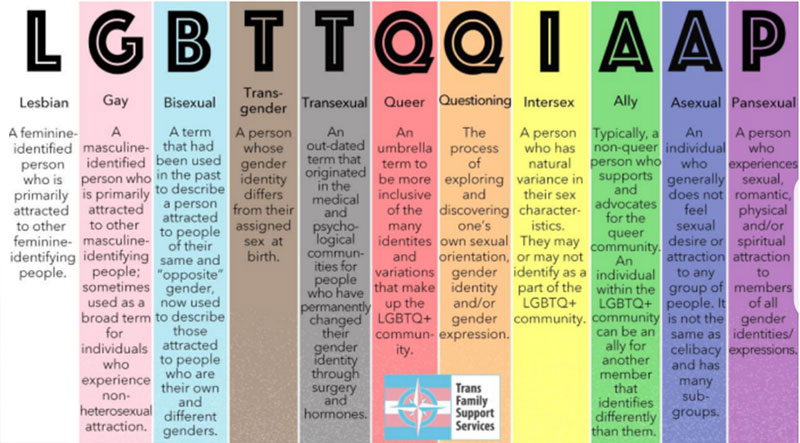
Introduction
Conversations about how to better understand and support our LGBTQ students have been at the forefront of many recent school conversations from directors to SPED to mental health staff and teaching staff. While we do have many students who are out and identify as gay, non-binary, or trans, this is also a community that can and do sometimes choose to be invisible for a variety of reasons.
Recent research shows as many as 1 in every 5 Gen Z youth between the ages of 18 – 26 self-identify as part of the LGBTQ+ community. Therefore, it is not only possible but LIKELY that you have students on your roster that currently identify or will identify with the LGBTQ+ community in the future, even if you never know it.
LGBTQ+ and Mental Health
Research shows that many LGBTQ+ youth struggle with mental health issues. Experts point to factors such as discrimination, rejection from family and/or friends, harassment, and even fear of violence as some of the primary reasons for these issues.
Mental Health
- 73% struggled with anxiety
- 58% struggled with depression
- 82% wanted mental health care but 60% of those who wanted it were not able to obtain it
- 45% were afraid of having to get parents’ permission
- 29% worried about being outed
Physical Safety
- 36% reported being threatened or physically harmed due to gender identity
- 31% reported being threatened or physically harmed due to sexual orientation
- Only 1 in 3 youth felt their home was an LGBTQ-affirming place, but 1 in 2 youth felt school was an LGBTQ-affirming place
Suicide Rates
- 45% considered suicide in the last year
- 14% attempted suicide
- 21% Native American
- 20% Middle Eastern/North African
- 19% Black
- 17% Multiracial
- 16% Latino
- 12% white and Asian Pacific Islanders
- For youth with high social support, rates reduce by 50%
- Students who feel supported by their schools have significantly lower suicide rates
Source: Trevor Project 2022 Survey on Youth Mental Health
Who is LGBTQ+ Community?

This graphic gives a visual representation of the variety of identities that fall under the umbrella of LGBTQ+. While the number of people identifying with the LGBTQ+ community is expanding, experts believe this is because our language is just now catching up to people’s personal experiences. For many of us, this language is new and confusing. Gender identity is separate and distinct from gender (which is the gender you are assigned at birth). Many people within the LGBTQ community also choose to use different pronouns. For most of us, this is new terminology and a real learning curve. It’s ok to allow people to correct us if we misuse their pronouns or misgender them. We are all on a learning journey together. This chart above includes basic concepts and terminology, recognizing that much of this may be new to you.
Tips for Staff
- If you choose to, you can subtly show that you are an ally
– Add your pronouns to your Zoom name. To add pronouns, sign into Zoom, click your picture in upper right corner, click your name, click edit, edit your display name, and click save. - Use preferred pronouns and preferred names as requested
– Be aware of situations it may not be appropriate, such as if a student has come out to you but not their parents and would of if and when it is appropriate to not use requested pronouns and names. For instance, if a student has asked you to use preferred pronouns but is not out to their parents, it would be inappropriate to use those pronouns in front of parents or in meetings. - Use gender-inclusive language
– Instead of boys and girls, try friends, students, amazing humans, people, peep-a-doodles, kit kats, goblins and ghouls, kiddos, peeps, beautiful people, earthlings, snickerdoodles, y’all. Use your imagination!-
- Have you been able to tell anyone?
- Do you feel safe and supported by the adults in your life?
- Do you need help of any kind? Resources? People to talk to?
- Students in crisis – fill out form for referralSupport students who come out to you
– Offer support, but don’t assume they need “help”
– Listen
– Be accepting and non-judgmental
– Ask supportive questions - Dive deeper for more understanding
-
